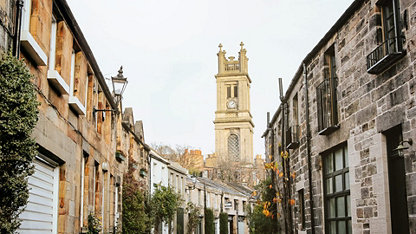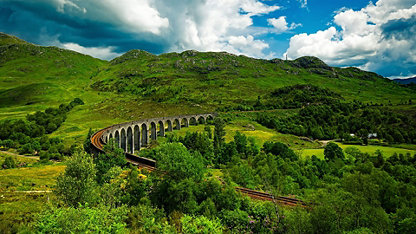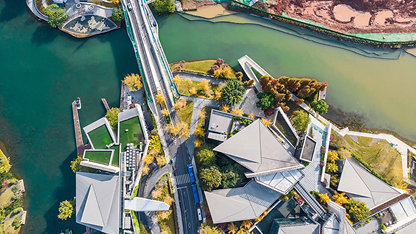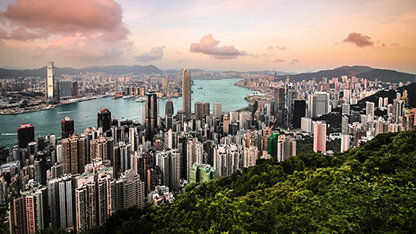Many of our cities’ public spaces are privately owned these days – and their numbers are rising. But are the suspicion and hostility they’re often met with justified, asks architecture and design writer Claire Dowdy?
Privately owned public spaces (POPS) have a terrible image. The press and social media love to highlight the sometimes bizarre rules of behaviour and heavy-handed security that the public can be subject to. In 2017, the Guardian described “the insidious creep of pseudo-public space in London”. Oh, for the good old days – the story goes – when citizens could roam freely over publicly owned parts of the city.
Where does this anathema come from? As Matthew Carmona, professor of planning and urban design at the Bartlett School of Planning at University College London (UCL), explains, the feeling is that public spaces in cities are becoming commercialised, privatised, securitised, homogenised and exclusionary, because they are shaped by the narrow interests of the few (the developers) instead of the many (society as a whole).
“These arguments even extend to those public spaces that are owned by the public sector, on the basis that they are subject to similar pressures because of the way their management is increasingly contracted out or unduly influenced by the private sector,” says Carmona.
But are POPS – from the atrium of Trump Tower in New York City, to More London on the UK capital’s south bank – un-civic or just misunderstood? The story of POPS is not that simple.

Who decides what we can do in our public spaces is becoming a crucial issue for the built environment sector
Debunking the myths
Several myths have risen up, some of which are ripe for debunking. Private or partially private ownership of parts of the public realm is not a recent phenomenon; there are rules of conduct for virtually everywhere the public can go. Some POPS have been created out of neglected, inaccessible land, some are created because municipalities no longer have the funds to make and (more importantly) maintain public spaces. All of which suggests that a better understanding of the complexities of POPS would benefit everyone.
“If you go back in time, pretty much everything was either privately owned, such as garden squares with keys, or public – such as squares run by the council. That was straightforward,” says past RICS president John Hughes FRICS, partner at Hemson Consulting in Toronto.
Having originated in the US, POPS have gone global. They arrived in the UK in the 1980s, with London’s Canary Wharf and Broadgate Centre among the first large, secure, privately controlled public places. Since then, space has been reduced in cities across the world.
“As you get denser cities, the ability to create new public space is difficult,” says Hughes. And this is where POPS can come into their own. “You can squeeze a POPS into a smaller development area rather than a public park. It’s a little easier to find the space for that.”
“While some existing POPS – such as More London – have shed their overbearing or petty restrictions, the latest generation is likely to be more easy-going from the outset.”
Couple that with squeezed municipal budgets around the world, and it’s easy to see why there’s more awareness of new POPS than new publicly owned spaces. Hughes cites two projects in Toronto that illustrate funding differences: CIBC Square and Rail Deck Park. “CIBC Square is a fine example of an extremely valuable and needed piece of public space being created and paid for by a developer as part of a big office development,” he says.
Joint-led by developers Ivanhoé Cambridge and Hines, CIBC Square comprises a pair of office towers on a 3m ft2 (278,709 m2) downtown campus, with an elevated park connecting them to Greater Toronto. With its slopes and hills, horticulture, gardens, shade groves, balconies and viewing points, the park “will provide a space to convene and refresh, and for corporate tenants to host memorable events”, according to the development partners.
Meanwhile, Rail Deck Park is a proposal endorsed by the city council to cover over a rail corridor in the centre of the city with 21 acres (8.5 ha) of parkland. The council states the intention is for the park to “transform this unused air space into Toronto’s next great gathering space for recreation, culture and celebration”.
“It’s an ambitious plan to create a public park, but it faces funding challenges,” Hughes says of Rail Deck Park. The current estimated development cost is C$1.66bn (£989.5m). “It’s a work in progress without a clear future, because of the challenge of capital acquisition and operating funds.”
Funding public space
It’s vital to recognise the difference between the cost of funding a park and then spending more on maintaining space over the years, warns Hughes. “Unfortunately, you can end up with nicely designed and finished parks, but after 10 years the paving breaks down, and you end up with a patch of asphalt. That’s city-owned facilities. However, a very successful office development won’t want to see deterioration of the land, so they would want to retain control and look after it.”

In the dark? There are rules of conduct for virtually everywhere the public can go
The POPS with obvious civic credentials are those built on previously inaccessible land. Carmona cites London’s Canary Wharf and Greenwich Peninsular. “Those places were never public spaces; they were ex-industrial areas that didn’t have public access.”
Likewise, the new district of Barangaroo is being built on a disused stretch of Sydney’s dockyards. At 54 acres (22 ha), it’s the city’s largest urban renewal project since the 2000 Olympic Games. When completed, more than half the site will be open public space, and the whole 2.2km foreshore walk will be accessible to the public.
While some existing POPS – such as More London – have shed their overbearing or petty restrictions, the latest generation is likely to be more easy-going from the outset. Carmona, who focuses on the design and management of public space, is researching London, Oslo, Copenhagen and Malmö. “The Harbour Promenade in Oslo is a good example of a combination of privately and publicly owned spaces, where the restrictions, if there are any, are not obvious.”
Likewise, the 67 acres (27 ha) being regenerated by developer Argent in London’s King’s Cross. Featuring public spaces, retail, leisure, offices and contributions from designers such as Thomas Heatherwick, the massive mixed-use project is 67.5% owned by pension fund AustralianSuper.
“Generally, we allow the public realm to be used as any other part of London,” says Julia Finlayson, project director of public realm at Argent, who manages the public realm design at King’s Cross. “It’s about creating another piece of London, not an exclusive place.”
She explains the reasoning behind this approach. “It wouldn’t be successful if access were restricted. Retail and food and beverage operators rely on footfall. Residential and office tenants like to be in a vibrant location; that’s one of the reasons office users come to the site, that’s part of the selling point.”
Hughes argues that the King’s Cross mindset isn’t shared by everyone. “It’s not in developers’ interests – the reality is there’s a preference to restrict public access. A park would be nicer if it’s for exclusive use of the residents, without the hoi polloi. It wouldn’t naturally be developers’ inclination [to include the public].”
Before Argent put in the application for outline planning, it went through extensive community consultation, says Finlayson. The Glass-House Community Led Design is a UK charity that supports communities, organisations and networks to work together on the design of buildings, open spaces, homes and neighbourhoods. Its chief executive, Sophia de Sousa, stresses how tricky it is to take into consideration all the roles of a public space and the needs of all its users and stakeholders. “When you add the layer of privately owned and managed public space, the combination of private and financial interests and creating social value for the general public make the design process even more complex and important.”
She advises the creators of POPS to “be clear in the design process and the management regime that follows about where the space sits on the public-private spectrum for users. Otherwise, there will be conflicts that arise from that lack of understanding.”
Carmona suggests the adoption of a Charter of Public Space Rights and Responsibilities. “Such a charter would apply to all spaces, both existing and still to be built, that a reasonable person would regard as public, whether privately or publicly owned,” he writes in his blog. “This would cover all spaces that during daylight hours are (usually) open and free to enter. The critical point [at which] the state needs to intervene is when planning permission is given.” Because, Carmona believes, “it matters little who owns and manages it. What matters is that citizens’ rights are safeguarded. But these long-term management issues are not given proper consideration.”
Hughes agrees that the “bare minimum is to agree rules at planning stage. But it requires goodwill on all sides. Consistency is obviously easier [across cities] but, to some extent, every site varies. You can have some broad principles but you’re always going to have specific agreements regarding each site. There’s not an off-the-shelf answer for [each one].”
“It wouldn’t be successful if access were restricted. Retail and food and beverage operators rely on footfall. Residential and office tenants like to be in a vibrant location; that’s part of the selling point. ”
Julia Finlayson
Project director of public realm, Argent
After all, it’s not just POPS that have rules. “Trafalgar Square is publicly owned, but the bylaws are longer than your arm,” says Carmona. And, in east London, woe betide anyone planning on doing some household chores in Hackney’s parks: “No person shall in any open space shake or beat any carpet, mat or other thing, or place any clothes or other things for the purpose of drying or bleaching,” reads one bylaw.
Rules of engagement
The issues are not so much about ownership, but rather about how POPS are managed and the public’s expectations, says Antonia Layard, professor of law at the University of Bristol. She has a particular interest in urban law, and the legal provisions and practices involved in large-scale regeneration and infrastructure projects.
London’s Garden Bridge debacle was, in part, a result of the complexities of rule-setting. The public was outraged at the prospect of a private organisation setting rules for a public space, particularly as it was going to be part-funded by the UK taxpayer. The Heatherwick-designed project was axed in August 2017, leaving those aforementioned taxpayers £46m out of pocket. Layard points out that “there’s nowhere you can do whatever you like. I struggle to think of a piece of land where there aren’t rules… beaches?”
And what happens when wider legislation changes? Hughes points to the recent legalisation of cannabis in Canada. “Do they want people smoking, sitting on a bench? Or will they get moved on?” he ponders. “It’s the right of a [land] owner to have a certain degree of control.”
A second area of controversy playing out in Toronto is that of data ownership and control. The waterside neighbourhood Quayside is being developed through a partnership with Google’s sister company, Sidewalk Labs. It’s intended to serve as a smart city prototype to be studied and replicated across the globe to solve urban issues.
“There’s been a real tug of war about the issue of data,” says Hughes, with questions arising over how this new wired-in community would collect and protect the data of its occupants. He predicts “data ownership and control are going to be increasingly important issues”.
The argument goes that there is nothing inherently immoral about privately owned and managed public spaces. But, even in the 1960s, the nature of “public” was being addressed. As the architect and academic Denise Scott Brown said in her 2018 Soane Medal Lecture: “Architects often talk about designing public space, but I wanted them to learn, before designing, how people actually use such spaces, and listen when social planners warn that it isn’t public unless the public uses it.”
- Clare Dowdy writes about architecture and design for, among others, Wired and the Financial Times.
This article was originally published in The Public Space Issue of Modus magazine (February 2019).














